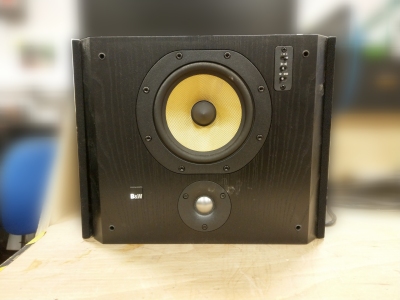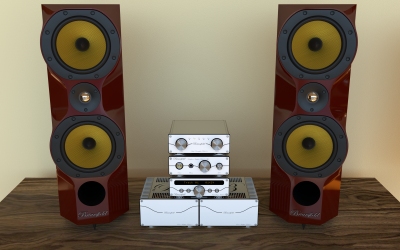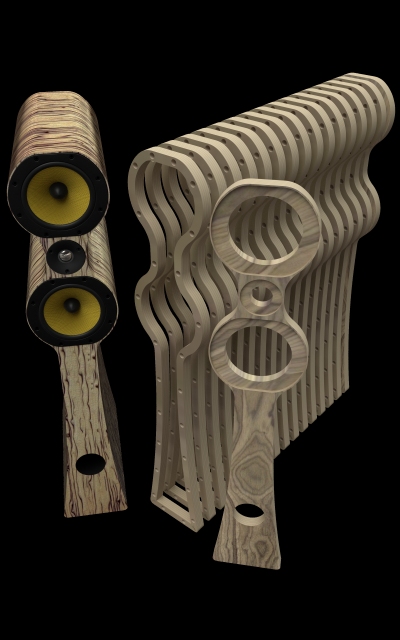
Loudspeaker Model 01
Inspiration:
A while back I picked up some Bowers & Wilkins DS7 surround speakers. The DS7 is a small sealed box housing a set of B&W's Nautilus drivers, with a dual mode selection between monopole (a normal 2 way loudspeaker) and dipole surround system speaker, using an anti-phase pair of side-mounted drivers, disconnecting the tweeter and modifying the bass response. Having no use for a home cinema surround speaker, what interested me were the drivers; in monopole mode they are similar to a sealed version of a similar B&W monitor - in the small box they're short on bass but very fast, open and detailed.
I had two pairs of DS7's, so was looking towards a D'Appolito layout (vertical LF-HF-LF); pairing the bass units brings their overall response a couple of dB above the tweeter, but this isn't a problem, especially if active crossovers are used.
Reverse engineering the speakers to find target design box volumes, I mocked up a few alternate cabinet designs in Inventor, ranging from conventional panel designs to CNC routed profiles intended to be assembled in layers, clamped and glued with dowels. Additionally I created a concept transmission line design, also designed to be CNC routed and manufactured in layers, with the internal baffle structure formed from the CNC profile.
Baffle area around the drivers is sculpted for aesthetics and to reduce sound reflections to improve sound imaging, something that both B&W and various other high end speaker manufacturers design in to their products. Keeping their silhouette narrow jointly for aesthetics and to make the baffles just about narrow enough to be machined on my CNC. The sculpted baffles are constructed from 50mm MDF, which could be split into two 25mm layers for easier manufacture. The machined baffles would then be fitted to the main boxes with the assembled box smoothed and finished with automotive paint.
Reverse engineering
Reverse engineering the DS7 showed an unusual 1st/3rd order LF-HF crossover, at around 3.5KHz. The unequal crossover order makes sense as the speakers are designed to be mounted above ear height, upside down, with the soundfield lobed down towards the listener, but this can make them sound nasal and overly bright as a full range speaker.
The HF crossover showed some voicing and a resonance counter filter around 10KHz, but standard otherwise. Frequency testing with the aid of a frequency generator, power amp, oscilloscope and with a pack of Blu-Tak and a pair of precision scales to weigh the bass unit's cone, gave Thiele-Small parameters:
QES = 0.48
QMS = 4.37
QTS = 0.433
VAS = 13.7 Litres
Measurement predictably showed the drivers have a very lightweight 16 gram Kevlar cone. I expected such a small sealed box to be underdamped, but approximating the DS7 box volume (the cabinet dimensions, minus 25mm walls and the full-width tube for the dipole speakers) gave an almost optimal Q of 0.7. Trying for an optimum ported design with two drivers per box would require a larger box volume, fine for a pair of column floorstanding speakers but would make for a large pair of desk monitors.


 One of the DS7 boxes
One of the DS7 boxes Ported design
Ported design CNC machined floorstanding concept
CNC machined floorstanding concept